Donna’s Garden Tips for September
go.ncsu.edu/readext?728039
en Español / em Português
El inglés es el idioma de control de esta página. En la medida en que haya algún conflicto entre la traducción al inglés y la traducción, el inglés prevalece.
Al hacer clic en el enlace de traducción se activa un servicio de traducción gratuito para convertir la página al español. Al igual que con cualquier traducción por Internet, la conversión no es sensible al contexto y puede que no traduzca el texto en su significado original. NC State Extension no garantiza la exactitud del texto traducido. Por favor, tenga en cuenta que algunas aplicaciones y/o servicios pueden no funcionar como se espera cuando se traducen.
Português
Inglês é o idioma de controle desta página. Na medida que haja algum conflito entre o texto original em Inglês e a tradução, o Inglês prevalece.
Ao clicar no link de tradução, um serviço gratuito de tradução será ativado para converter a página para o Português. Como em qualquer tradução pela internet, a conversão não é sensivel ao contexto e pode não ocorrer a tradução para o significado orginal. O serviço de Extensão da Carolina do Norte (NC State Extension) não garante a exatidão do texto traduzido. Por favor, observe que algumas funções ou serviços podem não funcionar como esperado após a tradução.
English
English is the controlling language of this page. To the extent there is any conflict between the English text and the translation, English controls.
Clicking on the translation link activates a free translation service to convert the page to Spanish. As with any Internet translation, the conversion is not context-sensitive and may not translate the text to its original meaning. NC State Extension does not guarantee the accuracy of the translated text. Please note that some applications and/or services may not function as expected when translated.
Collapse ▲
Cut beans and peas back to the ground after they finish bearing. Leave the roots in the ground as they will release stored nutrients back into the soil.
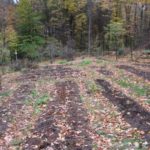
Garden Cleanup
After harvesting pumpkins and winter squash, wash them with a 10% bleach solution to prevent rot. Never sit them on bare ground or concrete.
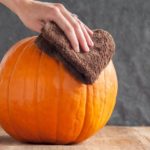
Wash Pumpkin
Keep the area under fruit trees clear of tall grass and weeds to discourage meadow vole damage. Under the cover of tall plant growth these animals can quickly girdle the tree, causing death.
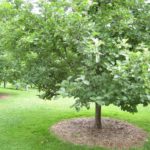
Weed Around Fruit Trees
Spread newly dug potatoes out to dry for a few hours before storing them in a dark, cool area. Never store in plastic bags. Also, never wash potatoes as this shortens their storage life. If dried soil clings to the tuber, clean it off with a soft, dry brush.
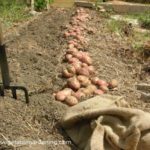
Newly Dug Potatoes
Do not fertilize trees and shrubs. They need to start slowing down in order to prepare for winter dormancy. New growth, late in the season could be damaged by an early freeze.
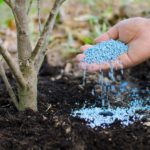
Do Not Fertilize in Fall
It’s time to fertilize the lawn. 10-10-10 or slow release lawn food will do. If using 10-10-10 apply 20 lbs. per 1,000 square feet.
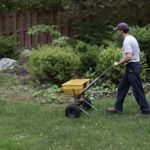
Fertilize the Lawn
Get those spring bulb orders placed. It’s still a little early to plant but if you wait until later to order or purchase, you might not get the colors you want. Put them in a cool, dark place. If storing in the fridge, never put them with apples.

Spring Bulbs
Plant cover crops such as cereal rye on bare garden ground. This keeps down weeds and will add organic matter and nutrients to next year’s vegetable garden.
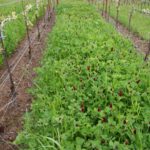
Cover Crop
Soil tests are available at the Extension Office. If the lawn or garden has struggled this growing season, a good place to start is with a soil test. It’s simple to do and only costs the price of postage.
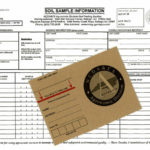
Soil Test
September is prime time for planting turf grass or over-seeding cool-season lawns. Sowing in September gives the newly planted grass plenty of time to become established before the first freeze.
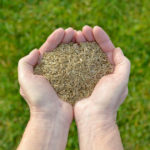
Grass Seed
If rhododendrons didn’t have many flowers last spring, add some triple phosphate around the base of the plant this fall. It will aid in formation of blooms for next year.
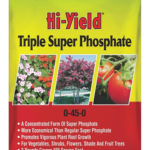
Add Triple Phosphate to Rhododendrons
It’s time to check the exterior of the home for minute cracks and entrances before lady beetles and stink bugs begin to invade to overwinter in walls and attics. Add sweeps to garage doors and exterior doors. Caulk around window frames and doors. Make sure attic vents are secure.
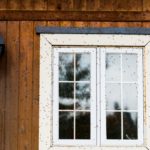
Seal Around Doors and Windows
Divide peonies, leaving at least 3 eyes in each division. Plant the divisions no more than 2 inches deep. If peony flowers were scarce this season, division might be the solution to your problem.
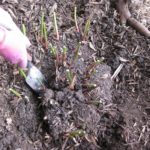
Divide Peonies
When leaves begin to fall, keep them raked. Don’t let leaves pile up on the lawn. This can damage or even kill turf grass.
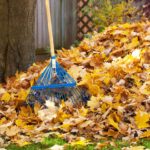
Rake Leaves
Continue to scout for insect damage on fall crops. It can happen quickly. For worm control, spinosad or carbaryl are effective.
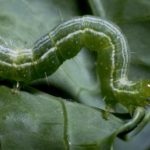
Insects on Fall Crops
It’s time to plant pansies. The earlier they are set out, the better established they will be for early spring flowering.
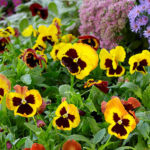
Pansies
Clean up and remove spent foliage from the vegetable garden. Insects and diseases can overwinter in dead plants and debris.
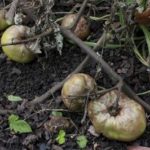
Clean Up Vegetable Garden
Fall is a great time to control fire ants in the landscape. The 2-step bait and drench approach is most effective.
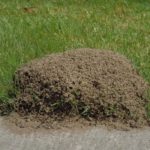
Control Fire Ants
Don’t prune! It’s to late to prune trees and shrubs. They don’t have time to harden off the new growth before a killing frost.
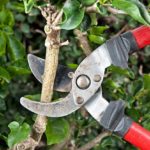
Don’t Prune Now
Fall is a great time to control clover in the lawn. Use an herbicide containing 2,4-D such as Weed b Gon. There will be a waiting time before re-planting grass. Read the label for directions.
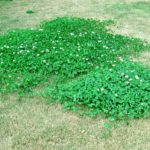
Control Clover
Newly dug sweet potatoes need to be cured to prevent rot. Store in a warm place 80-85 degrees for 10 days or 65-75 degrees for 3 weeks. Humidity also needs to be high-85-90%. Increase humidity by stacking crates or box and covering with paper or heavy cloth. Winter storage should be done in a dark area between 55-60 degrees.
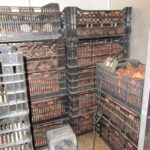
Cure Sweet Potatoes
Continue mowing the lawn as long as the grass continues to grow. It can be cut a little higher at 4 inches.
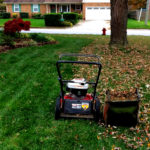
Mowing
Fall and early winter are the best times to take cuttings of deciduous shrubs and trees (lose their leaves in the winter). Take 6-inch cuttings with at least 4 nodes. Apply rooting hormone and plant with 2 nodes buried. This can be done in pots and left outside or directly into the garden. Wait until leaves have fallen.
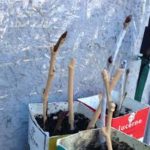
Cuttings




